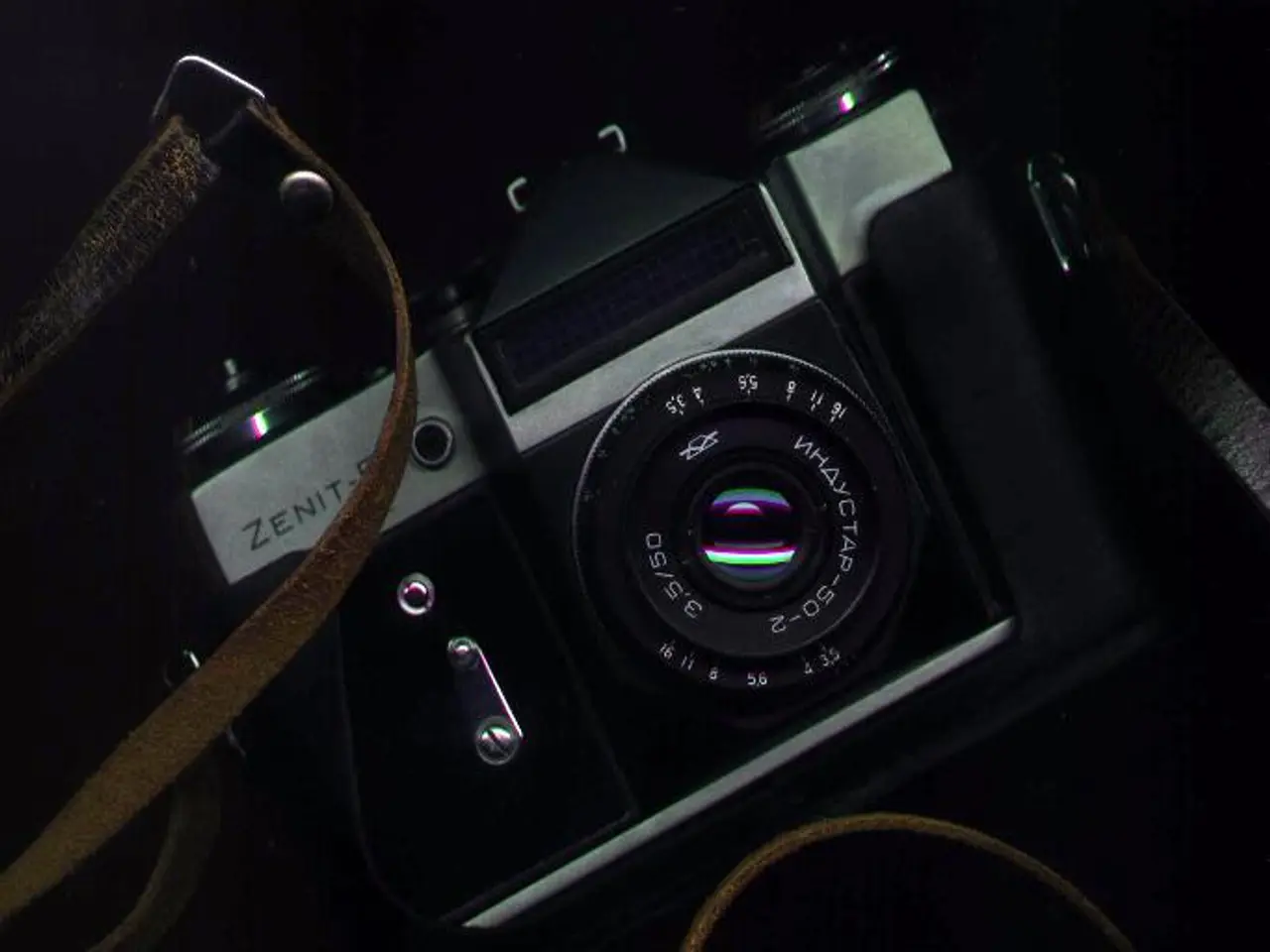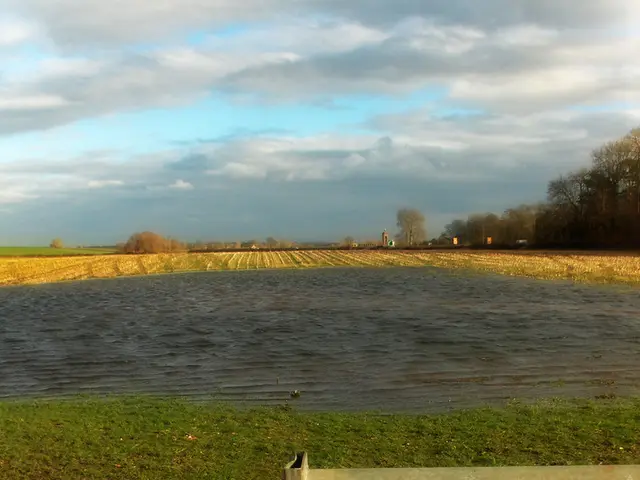Transforming Nature Photography: The Role of Innovative Instruments from Microscopes to Drones
In the realm of nature photography, innovation is the key to unlocking the secrets of our planet. From the tiniest snowflake to the vast expanse of a savannah, cutting-edge technology is transforming the way we capture and interpret the natural world.
Portable spectrometers, for instance, break down light into its component wavelengths, revealing chemical signatures and subtle color variations that lie beyond the human eye's perception. This technology, once the domain of laboratories, is now being harnessed by photographers to reveal the unseen beauty of the natural world.
Telephoto lenses are another essential tool, enabling photographers to capture animals from a distance without disturbing their natural behaviours. These lenses allow us to observe creatures in their native habitats, from the stealthy movements of a leopard to the delicate dance of a hummingbird.
Wearable devices are also playing a crucial role. They help photographers navigate difficult terrain, monitor their health, and log exact locations of rare sightings. This data is invaluable to scientists, who use it to track species populations and understand the impact of climate change on our planet.
Macro lenses offer a closer look at the world, showcasing textures and patterns invisible to the naked eye. From the dew on a spider's web to the fine hairs on a bee's leg, these lenses reveal a hidden universe of detail.
Environmental sensors, integrated into cameras, record temperature, humidity, light levels, and air quality alongside every shot. This data helps scientists interpret animal behaviour, plant growth, or weather patterns, providing a more comprehensive understanding of our planet's ecosystems.
Wireless technology allows nature photographers to transmit images directly from remote locations to scientists, educators, or fans worldwide. This instant communication revolutionises research and education, bridging the gap between the field and the classroom.
Satellite imaging captures sweeping images of continents, oceans, and weather systems, providing context for ground-level photography and helping tell the story of our planet's interconnected ecosystems.
Field microscopes are compact, durable, and battery-powered, allowing researchers and photographers to examine specimens in the wilderness. These devices reveal the intricate designs of pollen grains and the crystalline structure of snowflakes, adding another layer of detail to our understanding of the natural world.
3D imaging and photogrammetry create detailed three-dimensional models of landscapes, fossils, or animal habitats, offering a new way to explore and understand our planet.
Light traps and UV photography expose patterns on flowers and animals that are invisible under normal light. This technology reveals a hidden world of colour and design, expanding our perception of the natural world.
Camera traps capture candid moments in the wild, revealing the drama and tenderness often missed by the human eye. These devices, which were likely first used in Africa for wildlife observation and research purposes, have become an essential tool in conservation efforts.
Thermal cameras detect heat rather than visible light, revealing animals at night or hidden in dense foliage. This technology is invaluable in tracking elusive species and understanding their behaviour in various environments.
Time-lapse cameras compress hours, days, or even months into seconds, unveiling the secret rhythms of the natural world. These devices allow us to witness the slow passage of time and the subtle changes that occur over long periods.
Robotic cameras explore dangerous or inaccessible environments, sending back images from the edges of the possible. These devices are essential in studying and documenting the most remote and challenging corners of our planet.
High-speed cameras capture thousands of frames per second, freezing action that would otherwise be a blur. This technology allows us to study the mechanics of flight, the splash of a drop, or the split-second reactions of animals, providing new insights into the natural world.
Citizen science apps encourage everyday people to document the world around them, sharing photos with global databases and contributing valuable data to research projects. These apps democratise scientific research, allowing anyone with a camera to contribute to our understanding of the natural world.
Underwater cameras document life in rivers, lakes, and oceans, allowing photographers to witness the swirling dance of jellyfish, the stealthy movements of octopuses, and the dazzling colours of tropical fish. These devices expand our understanding of the aquatic world and the creatures that inhabit it.
Image processing software refines shots, bringing out subtle colours, enhancing contrast, or stitching together panoramic views. This technology is essential in preparing images for publication, ensuring that the beauty and detail of the natural world are faithfully represented.
In conclusion, the tools of modern nature photography are revolutionising our understanding of the natural world. From the microscopic to the macroscopic, these devices are revealing a hidden universe of detail, colour, and movement. As we continue to innovate, who knows what secrets the natural world will reveal?
Read also:
- Peptide YY (PYY): Exploring its Role in Appetite Suppression, Intestinal Health, and Cognitive Links
- Toddler Health: Rotavirus Signs, Origins, and Potential Complications
- Digestive issues and heart discomfort: Root causes and associated health conditions
- House Infernos: Deadly Hazards Surpassing the Flames








